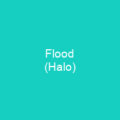Floods: A Catastrophic Phenomenon
Imagine a world where water, usually confined within the boundaries of rivers and oceans, spills over its banks, submerging land that was once dry and fertile. This is what flooding is—a natural disaster that can turn our lives upside down in an instant. Have you ever wondered how such a powerful force can be both destructive and beneficial?
Areal Flooding: The Silent Invader
Areal flooding, often the silent invader, occurs on flat or low-lying areas where water accumulates due to rapid rainfall or snowmelt. It’s like a slow-moving army of water that gradually seeps into every corner it can find. Can you imagine how devastating it must be for farmers who rely on their fields for livelihood?
River Flooding: The River’s Wrath
When rivers overflow, they unleash a torrent of water that can cause significant damage. This type of flooding is often caused by overland flow on tilled fields, drainage obstructions, or sustained rainfall. Is it not ironic how something as simple as rain can turn into such a destructive force?
Coastal Flooding: The Sea’s Fury
Coastal areas are particularly vulnerable to flooding due to storm surges, high tides, and large wave events. These waves can overtop flood defenses, causing severe damage. 
Floods and Climate Change: A Perfect Storm
Climate change has intensified coastal flood damage, affecting more people than ever before. The rising temperatures lead to increased evaporation, causing more intense rainfall events. Is it not alarming how our actions are shaping the future of our planet?
Flood Management Strategies: A Battle Against Nature
To combat these natural disasters, various flood management strategies have been developed. These include detention basins, levees, bunds, reservoirs, and weirs; sandbags and portable inflatable tubes; coastal defenses like sea walls, beach nourishment, and barrier islands; erosion control measures in riparian zones; flood controls like dams; repairing and expanding sewer systems and stormwater infrastructure; reducing impervious surfaces and creating green infrastructure. Are these not just band-aids to a much larger problem?
Flood Safety Planning: Preparing for the Worst
Flood safety planning involves seeking higher ground during floods, building critical facilities in low-risk areas, designing structures to withstand flooding, analyzing flood heights, inundated areas, and land use planning. Engineering design and construction of flood control measures are crucial steps in preparing for these events. How can we ensure that our communities are ready when the worst happens?
Flood Clean-Up Safety: A Dangerous Task
Cleaning up after a flood is not just about removing water; it’s also about ensuring safety. Workers and volunteers face numerous hazards, including electrical hazards, carbon monoxide exposure, musculoskeletal hazards, heat or cold stress, motor vehicle-related dangers, fire, drowning, and exposure to hazardous materials. Is it not our responsibility to protect those who risk their lives to help others?
Flood Forecasting: Predicting the Unpredictable
To predict floods accurately, mathematical models and computer tools are used. These include 1D and 2D models like HEC-RAS and TUFLOW, which can calculate flood depths across channels and the entire floodplain. Basin models combine land-surface process components with reach models to estimate runoff hydrographs and predict floods. Real-time hydrologic computer modeling uses observed data from various sources to generate daily or as-needed hydrologic forecasts. Can we ever truly be prepared for something that is so unpredictable?
The Global Flood Monitoring System: A Beacon of Hope
The Global Flood Monitoring System (GFMS) maps flood conditions worldwide, using precipitation data from NASA’s Earth observing satellites and a land surface model that incorporates vegetation cover, soil type, and terrain. This system provides critical information to emergency services, helping them prepare for emergencies by having resources available ahead of time. Is it not comforting to know that there are systems in place to help us?
Floods: A Double-Edged Sword
Floods can be both destructive and beneficial. While they cause significant damage, they also recharge groundwater, make soil more fertile, and provide water resources in arid regions. They spread nutrients to lakes and rivers, benefiting fish populations and bird habitats, and may support hydropower generation. Can we find a way to harness the power of floods for good?
Conclusion
Floods are a complex phenomenon that requires a multifaceted approach to manage effectively. From understanding their causes to implementing strategies and planning for safety, every step is crucial in mitigating their impact. As we continue to face the challenges posed by climate change, it’s essential that we work together to find solutions that protect our communities and environments. What steps will you take today to prepare for tomorrow?
You want to know more about Flood?
This page is based on the article Flood published in Wikipedia (retrieved on March 9, 2025) and was automatically summarized using artificial intelligence.





